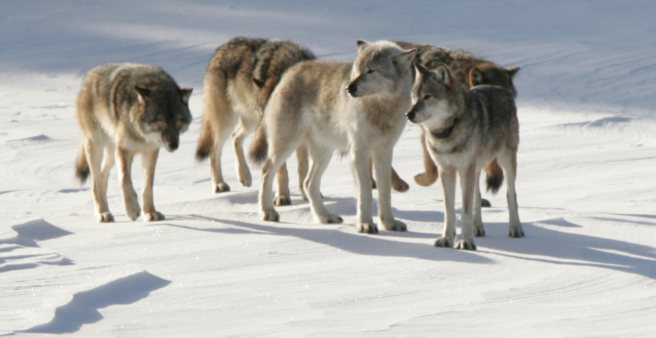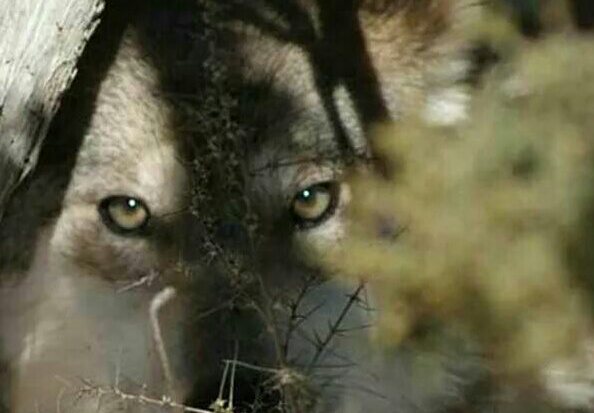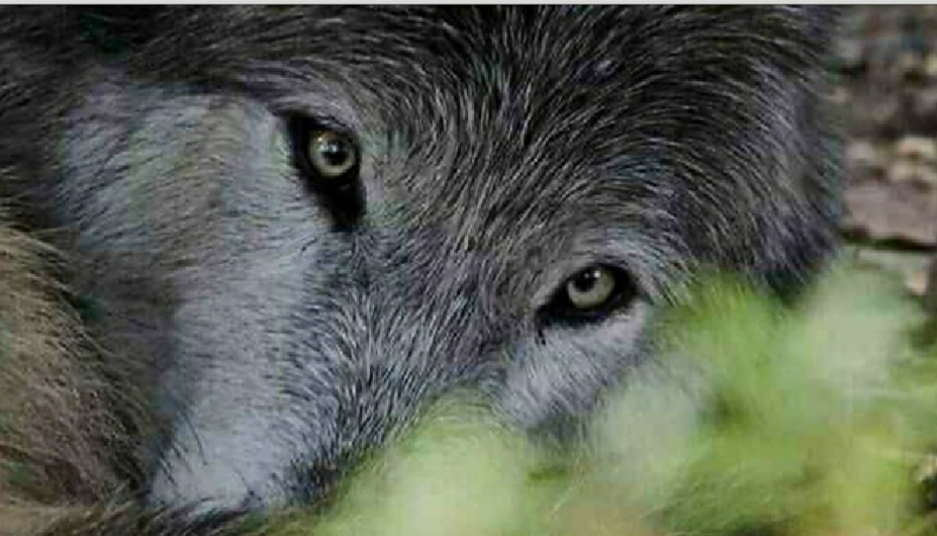The “natural” assumption.
“Most people who are familiar at all with Isle Royale assume that the national park’s famous populations of wolves and moose are “natural” residents of the archipelago. Thus, the impending decision of what to do if wolves became extirpated on Isle Royale seems to be an easy managerial one: replacement wolves should be brought in. But a historical view of major mammals on Isle Royale in the last hundred years reveals a much more complicated situation.
The first major published study on the wolves and moose of Isle Royale (The Wolves of Isle Royale), makes this very point. An astounding discovery made in a summary table of the “History of Isle Royale Mammals” shows that all the large mammals on Isle Royale have changed in the 20th century. Coyotes and lynx have gone and wolves appeared. Woodland caribou were extirpated and moose arrived and have become the dominant herbivore. Red fox arrived circa 1925…Otter were missing for much of the 20th century but now are quite common. And a little earlier, in the late 1800s, beaver were nearly extirpated. This radical composition turnover may be an effect of island biogeography. One primary indication of island biogeography is that the island(s) being studied have only a subset of the animals and plants found on the nearest mainland. Island biogeography also routinely maps species turnover on islands, as species “wink out” and different ones “wink in.” But also quite often a species winks out and then recolonizes on its own, as happened with otter and beaver at Isle Royale.
This fact of potential periodic and extensive change needs to be built into any discussions of augmenting wolf numbers in the near term. We need to acknowledge the possibility that the winking out of wolves on Isle Royale might be a natural phenomenon of island biogeography. But unfortunately, our yardstick for making such decisions is compromised: what appears to be the natural island fauna in the 20th century is actually a chimera, greatly altered by human actions.
Should we intervene…
Is it a succession of human actions—inadvertent intervention to be sure—that has had a direct role in wolves “naturally” appearing on Isle Royale. Even if moose and wolves had arrived on Isle Royale as a very direct consequence of human action, does that change the question of whether we should intervene to maintain the wolf population in the national park? For comparison, neither wolves nor moose are present on Michipicoten Island, an archipelago in northeastern Lake Superior that is similar in distance from the mainland as is Isle Royale [wolves did not arrive on Michipicoten until 2015 where over 700 caribou lived; by 2019 the wolves preyed on nearly all the caribou, the last 12 were removed from the island]. Due north of Isle Royale, and much closer to the mainland, wolves made it to the Slate Islands, hunted woodland caribou, and then left in the 1990s. Could the arrival of moose and wolves on Isle Royale be more an aberration than an inevitable event? Furthermore, if recent immigrants to the park were aided directly or indirectly by human actions, does that make them “exotic species” as defined by NPS management policies? NPS defines exotic species as those “that occupy or could occupy park lands directly or indirectly as the result of deliberate or accidental human activities….” The newly crafted resource management recommendation for the NPS, Revisiting Leopold: Resource Stewardship in the National Parks, is written, in part, as a policy response to the array of environmental changes, such as climate change, that are confronting national parks. The report calls for an expanded scientific capacity to guide resource management “to steward NPS resources for continuous change that is not yet fully understood, in order to preserve ecological integrity….” Wolves are clearly native to the region, but perhaps not to Isle Royale. Might their indigenousness to the region and their place in the ecological process in the region outweigh their potential non-native history on Isle Royale? Because wolves are part of a “largely self-sustaining and self-regulating” Isle Royale ecosystem, should we overlook their questionable “natural” tenure? If so, we should at least make this decision transparently. Intervention can be an important tool to maintain a park’s ecological resiliency. But “intervention” as a concept exists on a continuum of human actions that range from unintended consequences (wolf trapping on Ontario) to intervention (radio collaring of wolves and moose on Isle Royale, closures of zones to protect denning areas, closure of the park to dogs and cats) to intentional manipulation (the introduction of the Detroit Zoo wolves).
A historical view of Isle Royale’s mammalian history suggests there are both known and likely unknown limits to species persistence through time. It is likely that many animal species’ tenure on the island is episodic, ranging from a single colonizations of short duration to persistence lasting decades. It may not always be anthropogenic forces that result in a species winking out or another winking in; an example is the episodic presence of sharptail grouse at Isle Royale.
A historical view of the relatively short and possibly atypical residence of wolves suggests the proposed reintroduction could become a recurring need to sustain the health and persistence of the population. Do we want to reintroduce wolves to Isle Royale National Park every 50 or so years?
To further explore how much intervention is appropriate, it’s useful to turn to a long-used Isle Royale metaphor, namely, that the national park is an “outdoor laboratory.” Vucetich et al. are proposing a level of intervention for wolves which bespeaks of the park as more of a laboratory. If intervention is too frequent, then Isle Royale stops having the feel of an outdoor laboratory, and its wilderness character is diminished to boot. Periodic interventions would run counter to one component of the Wilderness Act, namely, that “the imprint of man’s work” must be “substantially unnoticeable.” But Isle Royale has not been unimpacted for quite some time. Regional, national, and global impacts have greatly altered the naturalness of the Isle Royale lands and waters, even if the results are sometimes hard to see.” (source)

And what about the moose (the primary food source for Isle Royale wolves) which tend to become infested with an astounding number of ticks at one time. Thanks to global warming, one animal which typically can get 30,000 ticks in normal fall weather conditions, now contends with as many as 160,000 ticks during warmer winters and in years with a late first snowfall. The eventual result for heavily tick infested moose is malnutrition and death; a high number of ticks is “almost a death sentence” for calves because they can lose their entire blood supply over just a few months. Climate change magnifies the tick problem because the pests live longer and reproduce in greater numbers if there’s less snow on the ground by spring. Source
During the late 1980s and early 1990s, moose lived longer and gave birth to more calves as predation was down due to a steep decline in wolf survival. The moose population nearly tripled to almost 2,400 by 1996. During the winter of 1996, lack of forage for the moose, an outbreak of moose ticks , and severe winter all conspired against the moose. The winter had been more severe than any in over a century. The moose population collapsed from its all-time high to just 500 moose. The next year, during the winter of 1997, a wolf from Canada immigrated to Isle Royale. He crossed on an ice bridge that now rarely forms between Isle Royale and Canada, and revitalized the wolf population’s genetic diversity. Living in three packs, with 30 individuals, the wolves had been “thriving” until 2006. But with moose becoming increasingly rare (weakened by heat and ticks, fueling high rates of predation, moose dropped to their lowest observed levels) capturing food become increasingly difficult. One wolf pack failed after another. By 2011, the population was reduced to 9 wolves living in one pack and another half dozen wolves, the socially disorganized remnants of another pack (Source). As many as 50 wolves once roamed the island, though scientists think 25 is a more reasonable baseline number, according to the Wildlife News. Since scientists began keeping records in 1973, ice accumulation in the Great Lakes has declined by over 70 percent, an ice bridge may only form once every 15 years. With Lake Superior warming faster than any large lake on the planet, any hope of a “natural” genetic rescue disappears. John Vucetich, a researcher on the island, asserts that a genetic rescue is critical — not only for animals, but for the entire Isle Royale ecosystem, designated a protected biosphere reserve in 1981 for its pristine lake forest wilderness. “What is really important here is not the presence of wolves, per se,” Vucetich said. “But the wolves need to be able to perform their ecological function — predation. Predation has been essentially nil for the past four years now, and has led to a 22% increase in the moose population for each of the past four years.” This increase has brought the island population of moose up from 500 to 1,200 compromising the ecosystem integrity (An individual moose consumes up to 40 pounds of vegetation a day).
Bring in the wolves…problem solved…or not.
The wolves populated Isle Royale around 1949, and were believed to have been basically isolated ever since, comprised typically of just a couple dozen wolves. Small, isolated populations of wildlife never fare well and always exhibit high rates of inbreeding. The deleterious effects of inbreeding begin to become evident at a COI (coefficient of inbreeding) of about 5%. At a COI of 10%, there is significant loss of vitality in the offspring as well as an increase in the expression of deleterious recessive mutations. The combined effects of these make 10% the threshold of the “extinction vortex” – the level of inbreeding at which smaller litters, higher mortality, and expression of genetic defects have a negative effect on the size of the population, and as the population gets smaller the rate of inbreeding goes up, resulting in a negative feedback loop that eventually drives a population to extinction.
“Fragmentation of natural habitats is associated with population declines of many species. The resulting small and isolated populations are threatened by extinction for several reasons. Such populations are more vulnerable to demographic and environmental stochasticity. They also face several genetic threats. First, due to restricted mating opportunities, inbreeding becomes more likely. Second, if populations remain small and isolated for many generations, they lose genetic variation necessary to respond to environmental challenges (random fixation or loss of alleles through genetic drift). Third, unfavourable mutations are
expected to accumulate because selection operates less efficiently in small populations. Of these processes, inbreeding poses a more immediate threat, whereas
genetic drift and mutation accumulation affect the population in the long term. Environmental, demographic and genetic factors can interact and reinforce each other in a downward spiral, an extinction vortex.” BMC Evolutionary Biology
“For many decades, the wolves of Isle Royale had been taken as an example of a very small, isolated and highly inbred population which showed no signs of inbreeding depression, the negative impact of inbreeding. But we had it wrong, very wrong. In fact, the population dynamics of Isle Royale wolves have been affected by genetic processes in ways that have been as important as they are subtle.
In 2009, with the help of Jannike Räikkönen, an expert in Canid anatomy from the Swedish National Museum, we systematically inspected the skeletal remains from 50, or so, Isle Royale wolves that had been collected over the past five decades. A surprising number of these wolves suffered from several different kinds of congenital malformity in the spine… A particular kind of deformity, known as a lumbosacral transitional vertebrae (LSTV), is particularly well studied in dogs and wolves. Among healthy, outbred populations LSTV occurs in one out of a 100 wolves. On Isle Royale, a third of the wolves suffered from this malformity.
Not only did Isle Royale wolves exhibit LSTV at a high rate, but the rate of malformities had once been relatively low and increased over the decades…” – John A. Vucetich
Learn more about Congenital defects in a highly inbred wild wolf population
(Canis lupus) here.

Cause for alarm.
Obviously an isolated and small population of wolves is a bottleneck leading to extinction due to lack of genetic diversity. Without continuous human intervention this will be the case for any wolves brought to Isle Royale in the future, and, as the isolated species spirals downward to the extinction vortex there comes a great deal of suffering due to genetic deformities. The deterioration of the animal takes its toll; one female wolf on Isle Royale died during childbirth when her uterus quit working, trapping the pups inside her while she bled to death. The young wolf pictured here, presumed

dead, certainly experienced a miserable short existence (I, myself can hardly bear to look at this poor deformed animal). And what of the food supply? As mentioned earlier the moose population was near 2,400 in 1996, but plummeted in just one year to 500 animals due to an outbreak of moose ticks and a severe winter. When moose became increasingly rare in 2006, with a population of a little over 500, capturing food became increasingly difficult for the wolves.. “One wolf pack failed after another, with the population reduced by half.” The 1,250 moose presently on Isle Royale, weakened from the effects of climate change, can easily be devoured by a couple of dozen wolves and “wink out” leaving the wolves without a key and primary food source.
So, should wolves be reintroduced to Isle Royale?
Really this is a difficult question. For the sake of the ecosystem, then yes, perhaps the wolves should be reintroduced. But what about the wolves. One aspect in all this discussion needs to be the welfare of the wolves captured for augmentation. Wolves for re-introduction on Isle Royale would have to be sourced from multiple populations to give an initial genetic diversity. More wolves would possibly have to be added later to maintain this genetic diversity and prevent inbreeding.
Then, there is the physical collection of wolves which would pose difficulties and is likely to result in some deaths. Would they be collected by trapping, snaring or be incapacitated by dart from a helicopter?
Removal of the alpha animals from a pack would cause huge upheaval, and studies show that it would almost certainly lead to the dissolution of the pack. Packs that may have been in existence for generations could literally be wiped out by the removal of perhaps just one animal (Learn more here).
Wolves may also attempt to make their way back to their own territories. Relocation of wolves in Alaska’s Denali National Park has led to them returning hundreds of miles to their previous locations. Obviously wolves reintroduced to Isle Royale may be unable to do that, but the instinct to return home could, to say the least, be troubling for them.
For the wolves sake, perhaps reintroduction is not a good idea. Not at all.
Researchers would love to prolong their studies of the predator-prey system on Isle Royale.
We would like to see an end to the suffering, human intervention, and manipulation. Perhaps the moose population should be controlled through castration, or with PZP (if that is possible). Perhaps we should allow for a natural process, and let the moose “wink out.” Heaven knows the outcome for “relocated” wolves, in the long run, would be terrible.
Related content:
Isle Royale Wolves: The Journey
As Isle Royale prepares to add wolves, a look at just how that might be done
Also see Environmental Impact Statement – Isle Royale Wolves
Must read: Technical Input regarding options for bringing wolves to Isle Royale National Park (IRNP)
Featured image: Ian McAllister

Copyright © 2015 [COPYRIGHT Intheshadowofthewolf, name and webpage]. All Rights Reserved.



You must be logged in to post a comment.